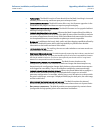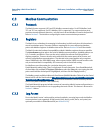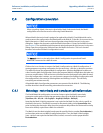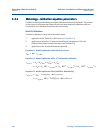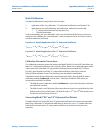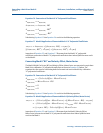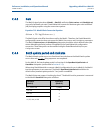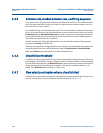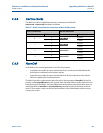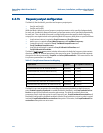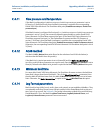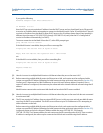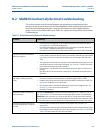
308 Emission rate, stacked emission rate, and firing sequence
Upgrading a Mark II to a Mark III Reference, Installation, and Operations Manual
June 2013 3-9000-743 Rev S
C.4.5 Emission rate, stacked emission rate, and firing sequence
The emission rate is the period between firing two different transducers. The stacked emission
rate is the period between consecutive firings of a single transducer when stacking is used (i.e.,
the stack size is not set to ‘None’).
For the Mark II meter, the default emission rate is 32 ms and the default stacked emission rate is
8 ms. For the Mark III meter, the desired emission rate and stacked emission rate are set via the
EmRateDesired and StackEmRateDesired data points, respectively. Setting these data points
to zero (their default value) indicates that the meter should use the fastest available emission
rates which are typically between 2 and 8 ms.
In order to achieve the fastest possible emission rates, the default transducer firing sequence
(selected via FireSeq) should be used.
When converting a Mark II configuration for use in a Mark III, the Daniel MeterLink configuration
conversion feature does not modify the Mark III meter’s EmRateDesired, StackEmRateDe-
sired, and FireSeq data points (which should be at default values).
C.4.6 Chord failure threshold
The Mark II PctFail parameter specifies the maximum threshold for the percentage of discarded
chord firings in a batch before a chord is flagged as failed. The Mark III utilizes a similar threshold
but with different perspective: the MinPctGood data point specifies the minimum threshold for
the percentage of good chord firings in a batch for a chord to be considered good (i.e., not
failed). Thus, MinPctGood is calculated as (100-
PctFail).
C.4.7 Flow velocity estimation when a chord is failed
The Mark III uses an improved method for estimating the average weighted flow velocity in the
event of a chord failure. The new method is described in detail in Section 6.1.6.




